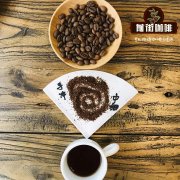Is Yemeni Coffee good? introduction to the growth Environment of Yemeni Coffee by Solar treatment

Professional coffee knowledge exchange more coffee bean information please follow the coffee workshop (Wechat official account cafe_style)
The natural sun treatment in Yemen is to manually harvest fully mature coffee beans and directly place the newly harvested coffee beans in a special coffee drying yard or in their own compacted soil front yard to receive the sun. During the sun drying period with Taiwan, rice is usually turned over with a wooden rake to keep each bean evenly dried. After about 20 days of coffee drying, remove the outer pulp and peel from the coffee beans. Yemeni coffee has a rich, complex, mellow, strong fermentation flavor and low acidity, coupled with the uncertainty of Yemeni coffee (when it rains in the season). It is not too much to call it the most special coffee in the world.
Yemeni coffee grows in steep terrain with little rainfall, poor land and insufficient sunshine. Such unique and difficult conditions that are not conducive to coffee growth have given birth to the Yemeni mocha, which can not be replaced by the coffee world. The main producing area of Yemeni coffee is Sanani, Matari and Ismaili.
Yemen is located in Ethiopia across the Red Sea from the Red Sea and East Yemen. It is the highest quality natural sun coffee producer. The coffee produced in Yemen is called mocha beans. In fact, Mocha is a coffee export port. In the early days, sun beans from nearby East Africa were exported to all parts of the world. Therefore, the sun beans produced in this area, including Yemen and Ethiopia in East Africa, are collectively referred to as mocha beans.
Yemeni coffee grows in steep terrain with little rainfall, poor land and insufficient sunshine. Such unique and difficult conditions that are not conducive to coffee growth have given birth to the Yemeni mocha, which can not be replaced by the coffee world. The main producing area of Yemeni coffee is Sanani, Matari and Ismaili.
Yimen Mattari Heights, coffee grows not far from farmers' backyards, most of the terrain is rugged and poor ridge volcanic rock, there is no data to verify the wild species, is the most common Yemeni mocha. We are looking forward to the complete suspension of Yamandou exports in 2012 because of the people's struggle for peace.
Property Characteristics: farm characteristics
Farm farm name: Small producers small producing group
Grade grade: naturally dried Arabica beans, no regulatory body, no grading system
Region producing area: Bani Mattari
Country countries: Yemen Yemen
Altitude altitude: 1400 m
Certification certification: without certification, all coffee is grown organically in accordance with the ancient method, and pesticides containing chemicals are not used.
Coffee Characteristics: coffee characteristics
Variety varieties: 10 special native mocha species are mainly Jaa'di,Taffahi and Dawairi.
Processing System treatment: Method Red ripe cherries dried on Africa Bed ripe cherry fruits were dried in an African (sun) elevated bed.
Harvest period harvest time: the main crop harvest period is from October to December, and the second harvest is in April in some producing areas.
Appearance size: 15muri 16 items
Important Notice :
前街咖啡 FrontStreet Coffee has moved to new addredd:
FrontStreet Coffee Address: 315,Donghua East Road,GuangZhou
Tel:020 38364473
- Prev

The whole process of a green bean evolving into a cup of coffee! Basics for novice baristas
Professional coffee knowledge exchange More coffee bean information Please pay attention to coffee workshop (Weixin Official Accounts cafe_style) We may all know that the process from a small seed to a towering tree is the baptism of frost and rain, then do you know what happened to the process from a small coffee bean to a cup of fragrant good coffee? When you drink Starbucks coffee representing European charm,
- Next

Hawaii Kona Introduction Hawaii Kona Coffee Light Medium Deep Roast Introduction What Roast Degree Is Best to Drink
Hawaii Kona Extra Fency Hawaii Kona coffee beans are grown on the western coast of the Big Island of Hawaii. They are bred in the fertile volcanic soil unique to the area. They are known for their exquisite quality and elegant flavor.
Related
- Detailed explanation of Jadeite planting Land in Panamanian Jadeite Manor introduction to the grading system of Jadeite competitive bidding, Red bid, Green bid and Rose Summer
- Story of Coffee planting in Brenka region of Costa Rica Stonehenge Manor anaerobic heavy honey treatment of flavor mouth
- What's on the barrel of Blue Mountain Coffee beans?
- Can American coffee also pull flowers? How to use hot American style to pull out a good-looking pattern?
- Can you make a cold extract with coffee beans? What is the right proportion for cold-extracted coffee formula?
- Indonesian PWN Gold Mandrine Coffee Origin Features Flavor How to Chong? Mandolin coffee is American.
- A brief introduction to the flavor characteristics of Brazilian yellow bourbon coffee beans
- What is the effect of different water quality on the flavor of cold-extracted coffee? What kind of water is best for brewing coffee?
- Why do you think of Rose Summer whenever you mention Panamanian coffee?
- Introduction to the characteristics of authentic blue mountain coffee bean producing areas? What is the CIB Coffee Authority in Jamaica?

